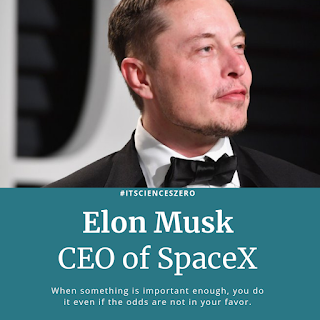Albert Einstein
Albert Einstein
Amid his stay at the Patent Office, and in his extra time, he created quite a bit of his noteworthy work and in 1908 he was named Privatdozent in Berne. In 1909 he progressed toward becoming Professor Extraordinary at Zurich, in 1911 Professor of Theoretical Physics at Prague, coming back to Zurich in the next year to fill a comparative post. In 1914 he was named Director of the Kaiser Wilhelm Physical Institute and Professor in the University of Berlin. He turned into a German resident in 1914 and stayed in Berlin until 1933 when he disavowed his citizenship for political reasons and emigrated to America to take the situation of Professor of Theoretical Physics at Princeton*. He turned into a United States resident in 1940 and resigned from his post in 1945.
After World War II, Einstein was a leading figure in the World Government Movement, he was offered the Presidency of the State of Israel, which he declined, and he collaborated with Dr. Chaim Weizmann in establishing the Hebrew University of Jerusalem.
Einstein dependably appeared to have a reasonable perspective on the problems of physics and the assurance to tackle them. He had his very own procedure and had the option to picture the primary stages while in transit to his objective. He viewed his significant accomplishments as insignificant venturing stones for the following development.
Toward the beginning of his logical work, Einstein understood the insufficiencies of Newtonian mechanics and his exceptional hypothesis of relativity originated from an endeavor to accommodate the laws of mechanics with the laws of the electromagnetic field. He managed established problems of measurable mechanics and problems in which they were converged with the quantum hypothesis: this prompted a clarification of the Brownian development of atoms. He explored the warm properties of light with a low radiation thickness and his perceptions established the framework of the photon hypothesis of light.
In his initial days in Berlin, Einstein hypothesized that the right elucidation of the uncommon hypothesis of relativity should likewise outfit a hypothesis of attractive energy and in 1916 he distributed his paper on the general hypothesis of relativity. Amid this time he additionally added to the problems of the hypothesis of radiation and factual mechanics.
During the 1920s, Einstein set out on the development of brought together field hypotheses, despite the fact that he kept on dealing with the probabilistic elucidation of the quantum hypothesis, and he endured with this work in America. He added to measurable mechanics by his improvement of the quantum hypothesis of a monatomic gas and he has additionally achieved profitable work regarding nuclear progress probabilities and relativistic cosmology.
After his retirement he continued to work towards the unification of the basic concepts of physics, taking the opposite approach, geometrization, to the majority of physicists.
Einstein's explores are, obviously, very much chronicled and his progressively significant works incorporate Special Theory of Relativity (1905), Relativity (English interpretations, 1920 and 1950), General Theory of Relativity (1916), Investigations on Theory of Brownian Movement (1926), and The Evolution of Physics (1938). Among his non-logical works, About Zionism (1930), Why War? (1933), My Philosophy (1934), and Out of My Later Years (1950) are maybe the most significant.
Albert Einstein got privileged doctorate degrees in science, medication, and reasoning from numerous European and American colleges. Amid the 1920's he addressed in Europe, America, and the Far East, and he was granted Fellowships or Memberships of all the main logical foundations all through the world. He increased various honors in acknowledgment of his work, including the Copley Medal of the Royal Society of London in 1925, and the Franklin Medal of the Franklin Institute in 1935.
Einstein's endowments definitely brought about his residence much in scholarly isolation and, for unwinding, music had a significant impact in his life. He wedded Mileva Maric in 1903 and they had a little girl and two children; their marriage was broken up in 1919 and around the same time he wedded his cousin, Elsa Löwenthal, who passed on in 1936. He kicked the bucket on April 18, 1955, at Princeton, New Jersey.
Facts About | Albert Einstein |
- The Nobel Prize in Physics 1921
- Born: 14 March 1879, Ulm, Germany
- Died: 18 April 1955, Princeton, NJ, USA
- Affiliation at the time of the award: Kaiser-Wilhelm-Institut (now Max-Planck-Institut) - - für Physik, Berlin, Germany
- Prize motivation: "for his services to Theoretical Physics, and especially for his discovery of the law of the photoelectric effect."
- Albert Einstein received his Nobel Prize one year later, in 1922.
Life:-
Albert Einstein experienced childhood in Munich, where his dad established an electrical designing company. In the wake of learning at the ETH college in Zurich, Einstein worked at the patent office in Bern, amid which time he produced a few spearheading works in the field of material science. He was later employed at colleges in Bern, Zurich, and Prague, and from 1914, in Berlin. After the Nazis caught control in Germany, Einstein moved to the US, where he worked at the Institute for Advanced Study in Princeton, New Jersey. Albert Einstein wedded twice and had three kids by his first marriage.
Work:-
On the off chance that metal cathodes are presented to light, electrical sparks between them happen all the more promptly. For this "photoelectric impact" to happen, the light waves must be over a specific recurrence, in any case. As indicated by the material science hypothesis, the light's force ought to be basic. In one of a few age making concentrates starting in 1905, Albert Einstein clarified that light comprises of quanta - "bundles" with fixed energies corresponding to specific frequencies. One such light quantum, a photon, must have a specific least recurrence before it can free an electron.


Comments
Post a Comment